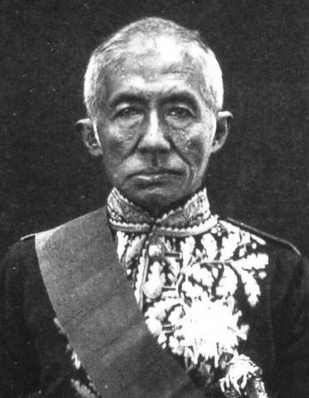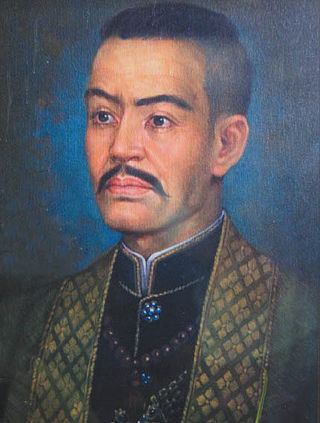The Capetian dynasty, also known as the "House of France", is a dynasty of European origin, and a branch of the Robertians and the Karlings. It is among the largest and oldest royal houses in Europe and the world, and consists of Hugh Capet, the founder of the dynasty, and his male-line descendants, who ruled in France without interruption from 987 to 1792, and again from 1814 to 1848. The senior line ruled in France as the House of Capet from the election of Hugh Capet in 987 until the death of Charles IV in 1328. That line was succeeded by cadet branches, the Houses of Valois and then Bourbon, which ruled without interruption until the French Revolution abolished the monarchy in 1792. The Bourbons were restored in 1814 in the aftermath of Napoleon's defeat, but had to vacate the throne again in 1830 in favour of the last Capetian monarch of France, Louis Philippe I, who belonged to the House of Orléans. Cadet branches of the Capetian House of Bourbon are still reigning over Spain and Luxembourg.

The House of Bourbon is a dynasty that originated in the Kingdom of France as a branch of the Capetian dynasty, the royal House of France. Bourbon kings first ruled France and Navarre in the 16th century. A branch descended from the French Bourbons came to rule Spain in the 18th century and is the current Spanish royal family. Further branches, descended from the Spanish Bourbons, held thrones in Naples, Sicily, and Parma. Today, Spain and Luxembourg have monarchs of the House of Bourbon. The royal Bourbons originated in 1272, when Robert, the youngest son of King Louis IX of France, married the heiress of the lordship of Bourbon. The house continued for three centuries as a cadet branch, serving as nobles under the direct Capetian and Valois kings.
A prince is a male ruler or a male member of a monarch's or former monarch's family. Prince is also a title of nobility, often hereditary, in some European states. The female equivalent is a princess. The English word derives, via the French word prince, from the Latin noun prīnceps, from primus (first) and caput (head), meaning "the first, foremost, the chief, most distinguished, noble ruler, prince".

Phra Bat Somdet Phra Phutthayotfa Chulalok Maharat, personal name Thongduang (ทองด้วง), also known as Rama I, was the founder of the Rattanakosin Kingdom and the first monarch of the reigning Chakri dynasty of Siam. His full title in Thai is Phra Bat Somdet Phra Paramoruracha Mahachakkriborommanat Phra Phutthayotfa Chulalok. He ascended the throne in 1782, following the deposition of King Taksin of Thonburi. He was also celebrated as the founder of Rattanakosin as the new capital of the reunited kingdom.
A royal family is the immediate family of kings/queens, emirs/emiras, sultans/sultanas, or raja/rani and sometimes their extended family.
An heir presumptive is the person entitled to inherit a throne, peerage, or other hereditary honour, but whose position can be displaced by the birth of a person with a better claim to the position in question. This is in contrast to an heir apparent, whose claim on the position cannot be displaced in this manner.

Mongkut was the fourth king of Siam under the House of Chakri, titled Rama IV. He ruled from 1851 to 1868. His full title in Thai was Phra Poramenthra Ramathibodhi Srisindra Maha Mongkut Phra Chomklao Chao Yu Hua Phra Sayam Thewa Maha Makut Witthaya Maharat.
A dynastic order, monarchical order, or house order is an order under royal patronage. Such an order is bestowed by, as a legitimate fons honorum, a sovereign or the head of a once-sovereign ruling family. These are often considered part of the cultural patrimony of the ruling family. Dynastic orders were often founded or maintained to reward service to a monarch or their subsequent dynasty.

The Illustrious Royal Order of Saint Januarius is a Roman Catholic order of knighthood founded by Charles VII of Naples in 1738. It was the last great dynastic order to be constituted as a chivalric fraternity, with a limitation to Roman Catholics and a direct attachment to the dynasty rather than the state. The founder of the order, Charles VII of Naples, ruled from 1734 until 1759.

Royal intermarriage is the practice of members of ruling dynasties marrying into other reigning families. It was more commonly done in the past as part of strategic diplomacy for national interest. Although sometimes enforced by legal requirement on persons of royal birth, more often it has been a matter of political policy or tradition in monarchies.

The House of Orléans-Braganza is by legitimacy, the imperial house of Brazil formed in 1864, with the marriage of the heir to the Brazilian throne, Isabel of Braganza with Prince Gaston, Count of Eu. The House of Orléans-Braganza never reigned, as Brazil's pure Braganza monarch, Emperor Pedro II being deposed in a military coup d'état, under the pressure of the civilian republicans, in 1889. However, with the death of Isabel in 1921, as the last Brazilian pure Braganza, her descendants inherited the dynastic rights of the Brigantine dynasty over the defunct Brazilian throne.

Somdet Phra Bawornrajchao Maha Sura Singhanat was the younger brother of Rama I, the first monarch of the Chakri dynasty of Siam. As an Ayutthayan general, he fought alongside his brother in various campaigns against Burmese invaders and the local warlords. When his brother crowned himself as the king of Siam at Bangkok in 1781, he was appointed the Front Palace or Maha Uparaj, the title of the heir. During the reign of his brother, he was known for his important role in the campaigns against Bodawpaya of Burma.
The Bunnag Family or House ofBunnag was a powerful Siamese noble family of Mon-Persian descent influential during the late Ayutthaya kingdom and early Rattanakosin period. The family was favored by Chakri monarchs and monopolized high-ranking titles. By the nineteenth century, its power and influence reached its zenith.

Krom Phra Ratchawang Bowon Wichaichan or Phra Ong Chao Yodyingyot (พระองค์เจ้ายอดยิ่งยศ) was a Siamese prince and member of the Chakri dynasty. He was the eldest son of Viceroy Pinklao and Princess Aim, and thus nephew to King Mongkut. Wichaichan succeeded his father by being appointed the Front Palace and Viceroy of Siam in 1868, during the reign of his cousin King Chulalongkorn. During his tenure the office of Front Palace was extremely powerful and rivalled that of the monarch's own. Inevitably the two forces clashed in the Front Palace crisis. Wichaichan was defeated and the power of the Front Palace was greatly diminished. After his death in 1885, the last vestiges of the title were abolished in favour of a crown prince. Notably, he is the only Front Palace that was elected by the council, not appointed by the king in accordance with the royal tradition, which is still considered as controversial and unorthodox practice to this day.

A royal bastard is a child of a reigning monarch born out of wedlock. The king might have a child with a mistress, or the legitimacy of a marriage might be questioned for reasons concerning succession.
Guelowar, also spelled Gelwar, Guelwar, Guelware, Gueleware or Gueloware, was a maternal dynasty in the pre-colonial Serer kingdoms of Sine and Saloum. They were from the Mandinka ethnic group. The offspring of Mandinka women and Serer men became the kings of Sine and Saloum. The dynasty lasted from the mid-14th century to 1969, the year both kings died.

Joof or Diouf is a surname that is typically Serer. This surname is also spelt Juuf or Juf.
Maad Semou Njekeh Joof was a member of the Joof Dynasty of the Kingdom of Sine now part of independent Senegal. Maad means king and Maad a Sinig means king of Sine in Serer. He was the founder of the Royal House of Semou Njekeh Joof, founded in the early eighteenth century. His royal house was the third and last royal house founded by the Joof family of Sine and Saloum. Since its foundation, at least seven kings of Sine from his royal house had succeeded to the throne including his son Maad a Sinig Boukar Tjilas Sanghaie Joof.
Maad Ndaah Njemeh Joof is one of the patriarchs of the Joof family, himself the medieval King of Laah in Baol now part of independent Senegal. He ruled from the late 13th century to the early 14th century, c. 1290. His descendants from the branch of Maad Patar Kholleh Joof ruled the pre-colonial Kingdoms of Sine, Saloum and Baol, from the 14th century to 1969. The last king of Sine and Saloum died in 1969. After their deaths, the Serer States of Sine and Saloum were incorporated into independent Senegal. His descendants went on to found three royal houses:









